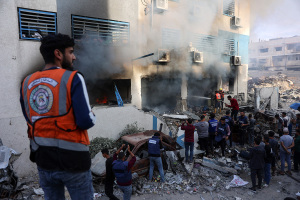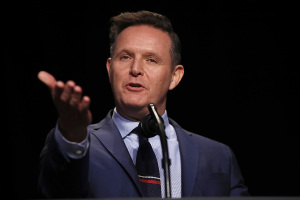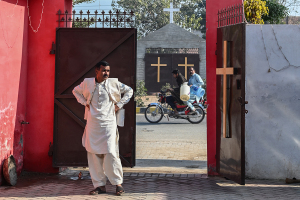India Finally Allows EU to Visit Orissa, But No Fact-Finding
NEW DELHI (Compass Direct News) – Weary of international scrutiny of troubled Kandhamal district in Orissa state, officials yesterday finally allowed delegates from the European Union (EU) to visit affected areas – as long as they do no fact-finding.
A team of 13 diplomats from the EU was to begin its four-day tour of Kandhamal district yesterday, but the federal government had refused to give the required clearance to visit the area, which was wracked by anti-Christian violence in 2008. A facilitator of the delegation said that authorities then reversed themselves and yesterday gave approval to the team.
The team plans to visit Kandhamal early next month to assess the state government's efforts in rehabilitating victims and prosecuting attackers in the district, where a spate of anti-Christian violence in August-September 2008 killed over 100 people and burned 4,640 houses, 252 churches and 13 educational institutions.
When the federal government recommended that Orissa state officials allow the delegation to visit the area, the state government agreed under the condition that the diplomats undertake no fact-finding, according to the Press Trust of India (PTI) news agency. The government stipulated to the EU team, led by the deputy chief of mission of the Spanish embassy, Ramon Moreno, that they are only to interact with local residents. The delegation consented.
Delegates from the EU had also sought a visit to Kandhamal in November 2009, but the government denied permission. The diplomats from Denmark, Sweden, Norway, Iceland and Finland were able to make it only to the Orissa state capital, Bhubaneswar, at that time.
Ironically, three days before the government initially denied permission to the EU team, the head of the Hindu nationalist Rashtriya Swayamsevak Sangh (RSS), Mohan Bhagwat, visited Orissa and addressed a huge rally of its cadres in Bhubaneswar, reported PTI on Tuesday (Jan. 26).
While Bhagwat was not reported to have made an inflammatory speech, many Christians frowned on his visit. It is believed that his organization was behind the violence in Kandhamal, which began after a leader of the Vishwa Hindu Parishad (World Hindu Council or VHP), Swami Laxmanananda Saraswati, was killed by Maoists (extreme Marxists) on Aug. 23, 2008. Hindu extremist groups wrongly blamed it on local Christians in order to stir up anti-Christian violence.
On Nov. 11, Orissa Chief Minister Naveen Patnaik told the state assembly House that 85 people from the RSS, 321 members of the VHP and 118 workers of the Bajrang Dal, youth wing of the VHP, were rounded up by the police for the attacks in Kandhamal.
EU's Indictments
It is believed that New Delhi was hesitant to allow EU's teams into Kandhamal because it has indicted India on several occasions for human rights violations. Soon after violence broke out in Kandhamal, the European Commission, EU's executive wing, called it a "massacre of minorities."
Indian Prime Minister Dr. Manmohan Singh, who was attending the ninth India-EU summit in France at the time of the violence, called the anti-Christian attacks a "national shame." French President Nicolas Sarkozy, head of the European Council, and Jose Manuel Barroso, president of the European Commission, took up the issue "strongly with Singh," reported The Times of India on Sept. 30, 2008.
On Aug. 17, 2009, the EU asked its citizens not to visit Kandhamal in an advisory stating that religious tensions were not yet over. "We therefore advise against travel within the state and in rural areas, particularly in the districts of Kandhamal and Bargarh," it stated.
The EU's advisory came at a time when the state government was targeting the visit of 200,000 foreign tourists to Orissa, noted PTI.
Kandhamal Superintendent of Police Praveen Kumar suggested that the advisory was not based on truth.
"There is no violence in Kandhamal since October 2008," he told PTI. "The people celebrated Christmas and New Year's Day as peace returned to the tribal dominated district."
Before denying permission to the EU, the Indian government had restricted members of a U.S. panel from coming to the country. In June 2009, the government refused to issue visas for members of the U.S. Commission on International Religious Freedom (USCIRF) to visit Orissa. The panel then put India on its "Watch List" for the country's violations of religious freedom.
Tensions Remain
Local human rights activist Ajay Singh said that while the state government had made some efforts to rehabilitate the victims, a lot more needed to be done.
An estimated 300 families are still living in private relief camps in Kandhamal, and at least 1,200 families have left Kandhamal following the violence, he said. These families have not gone back to their villages, fearing that if they returned without converting to Hinduism they would be attacked, he added.
Singh also said that authorities have asked more than 100 survivors of communal violence living in an abandoned market complex known as NAC, in G. Udayagiri area of Kandhamal, to move out. He said it is possible they were asked to leave because of the intended visit of the EU team.
Of the more than 50,000 people displaced by the violence, around 1,100 have received some compensation either from the government or from Christian and other organizations, he added.
Additionally, the state administration has to do much more in bringing the attackers to justice, said a representative of the Christian Legal Association. Of the total 831 police cases registered, charges have been filed in around 300 cases; 133 of these have been dropped due to "lack of evidence," said the source.





























